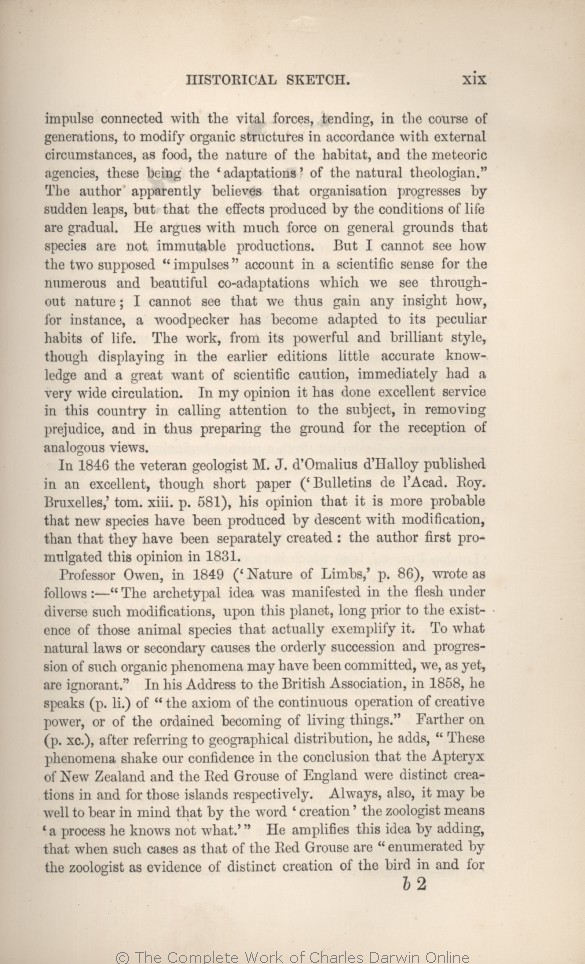impulse connected with the vital forces, tending, in the course of generations, to modify organic structures in accordance with external circumstances, as food, the nature of the habitat, and the meteoric agencies, these being the 'adaptations' of the natural
theologian." | theologian." 1866 1869 1872 | | theologian.' 1861 |
| life. 1861 1866 1869 | | Life. 1872 |
| this country in calling 1866 1869 1872 |
| calling in this country 1861 |
|
|
In 1846 the veteran geologist M. J. d'Omalius d'Halloy published in an
excellent, | excellent, 1861 1866 1869 | | excellent 1872 |
| Bruxelles,' 1861 1866 1869 | | Bruxelles, 1872 |
| xiii. 1869 1872 | | xiiI. 1861 1866 |
| modification, 1861 1866 1869 | | modification 1872 |
|
|
Professor Owen, in 1849 ('Nature of Limbs,' p. 86), wrote as
follows:—"The | follows:—"The 1866 1869 | | follows:— "The 1861 1872 |
| "These 1861 1866 1869 | | 'These 1872 |
|









